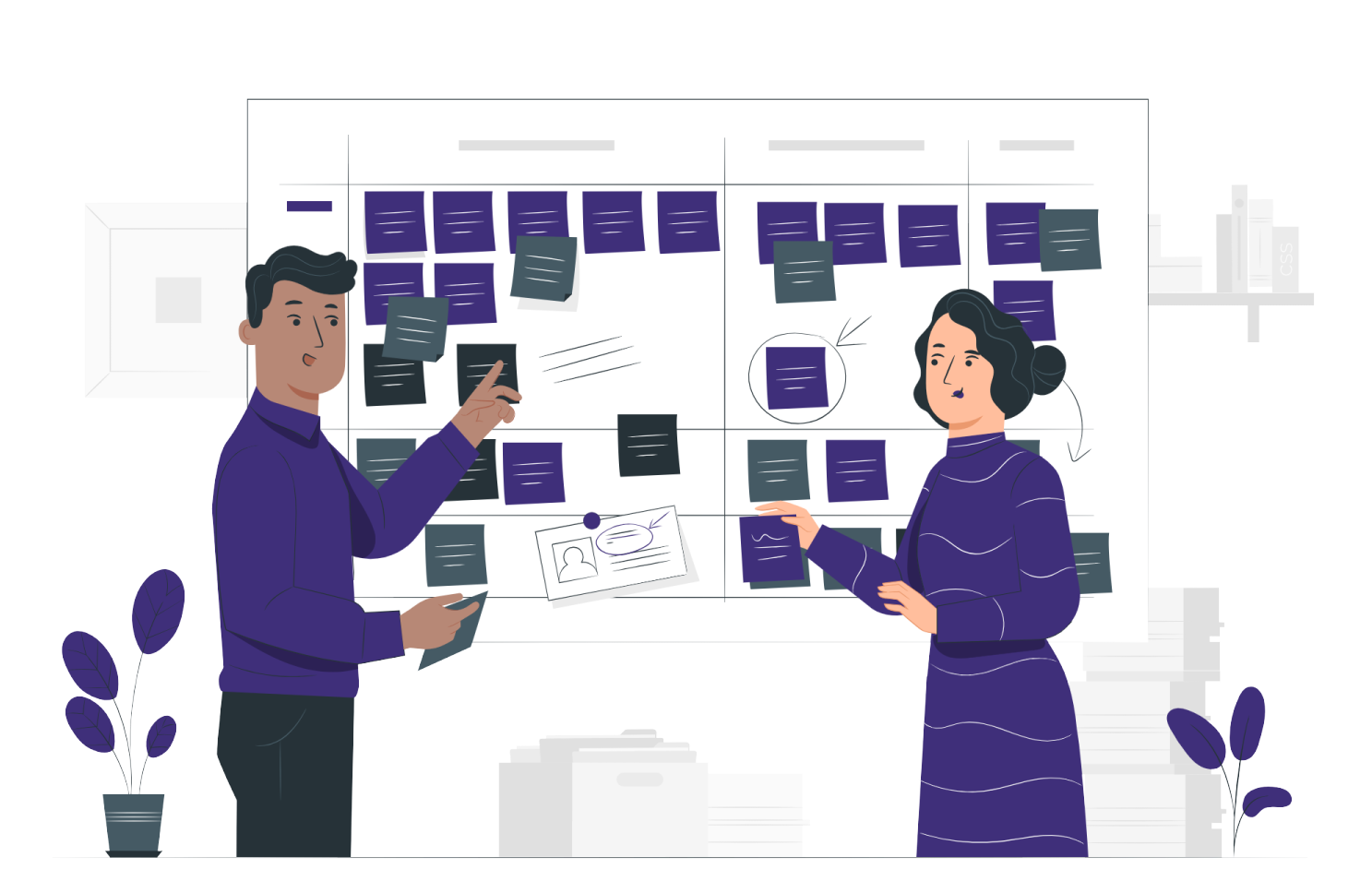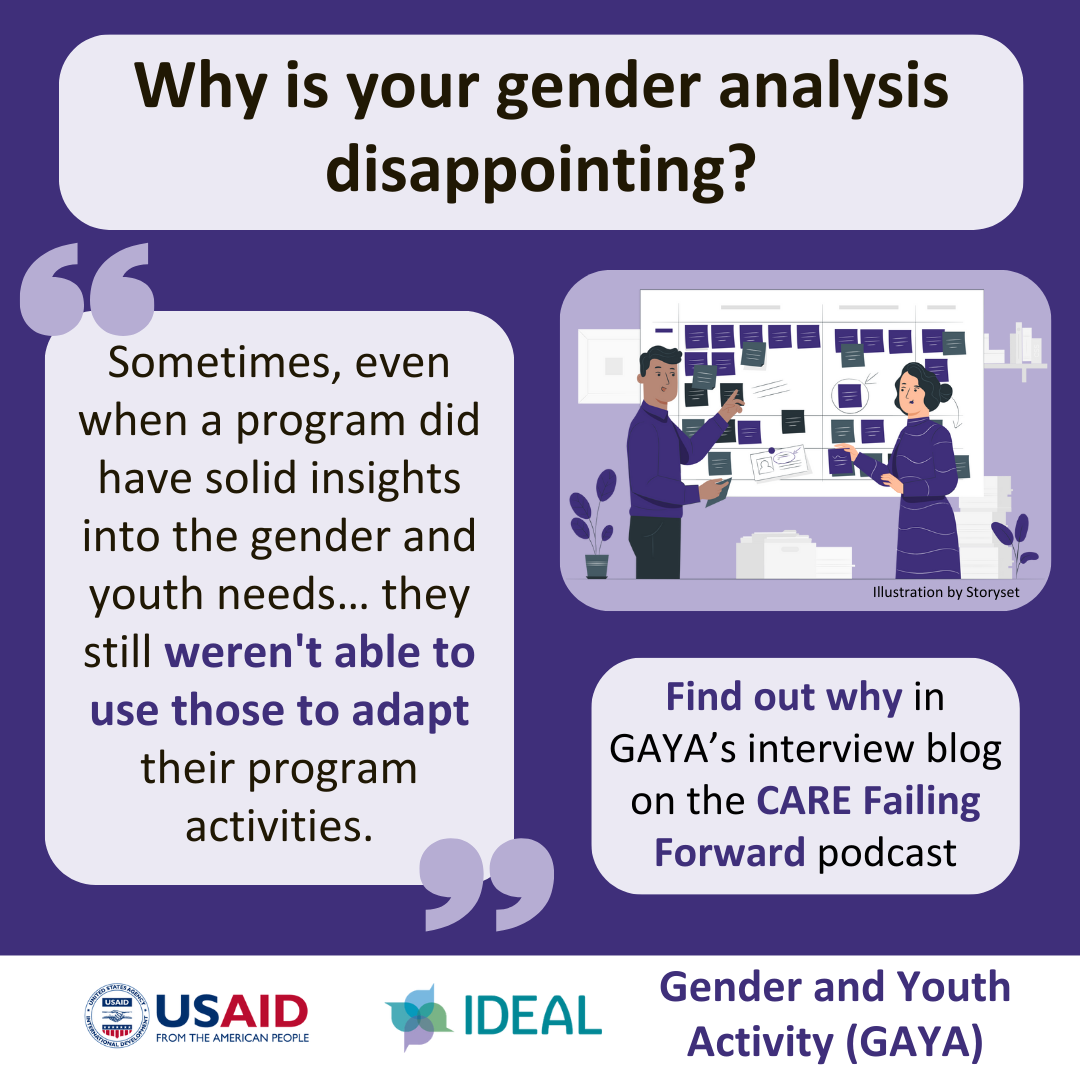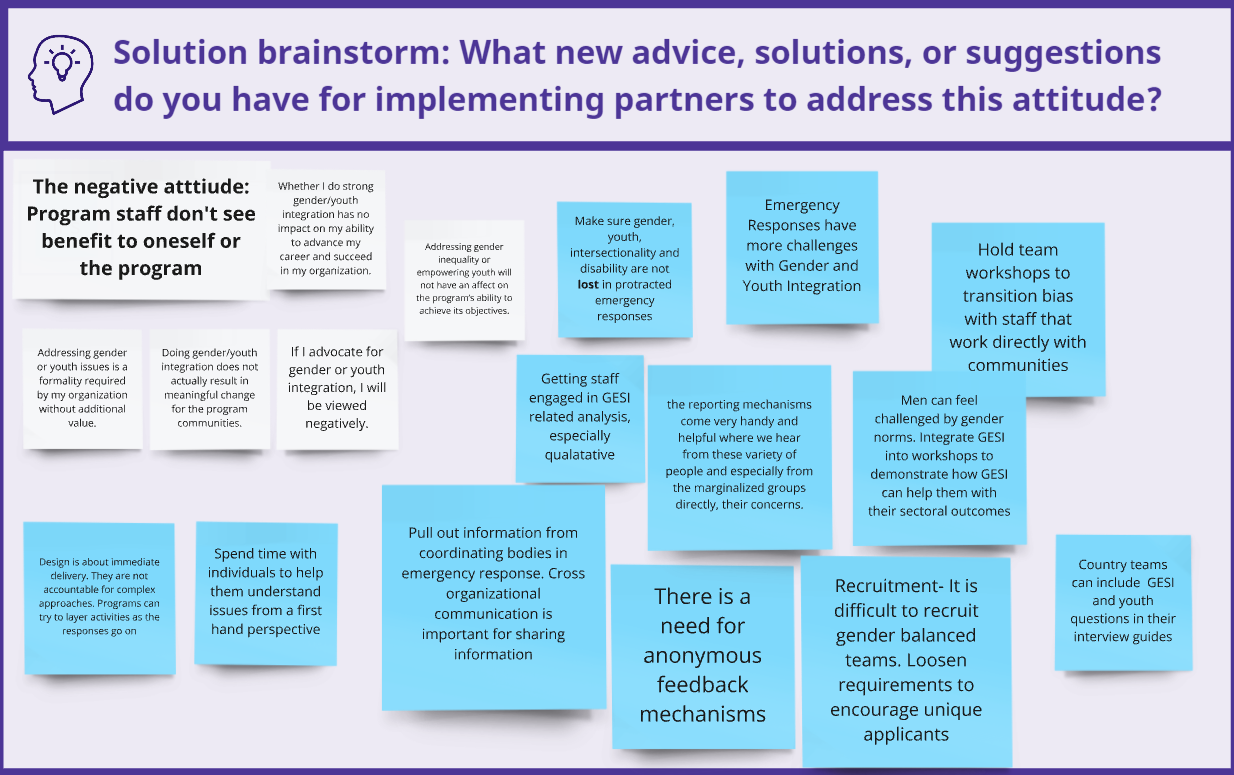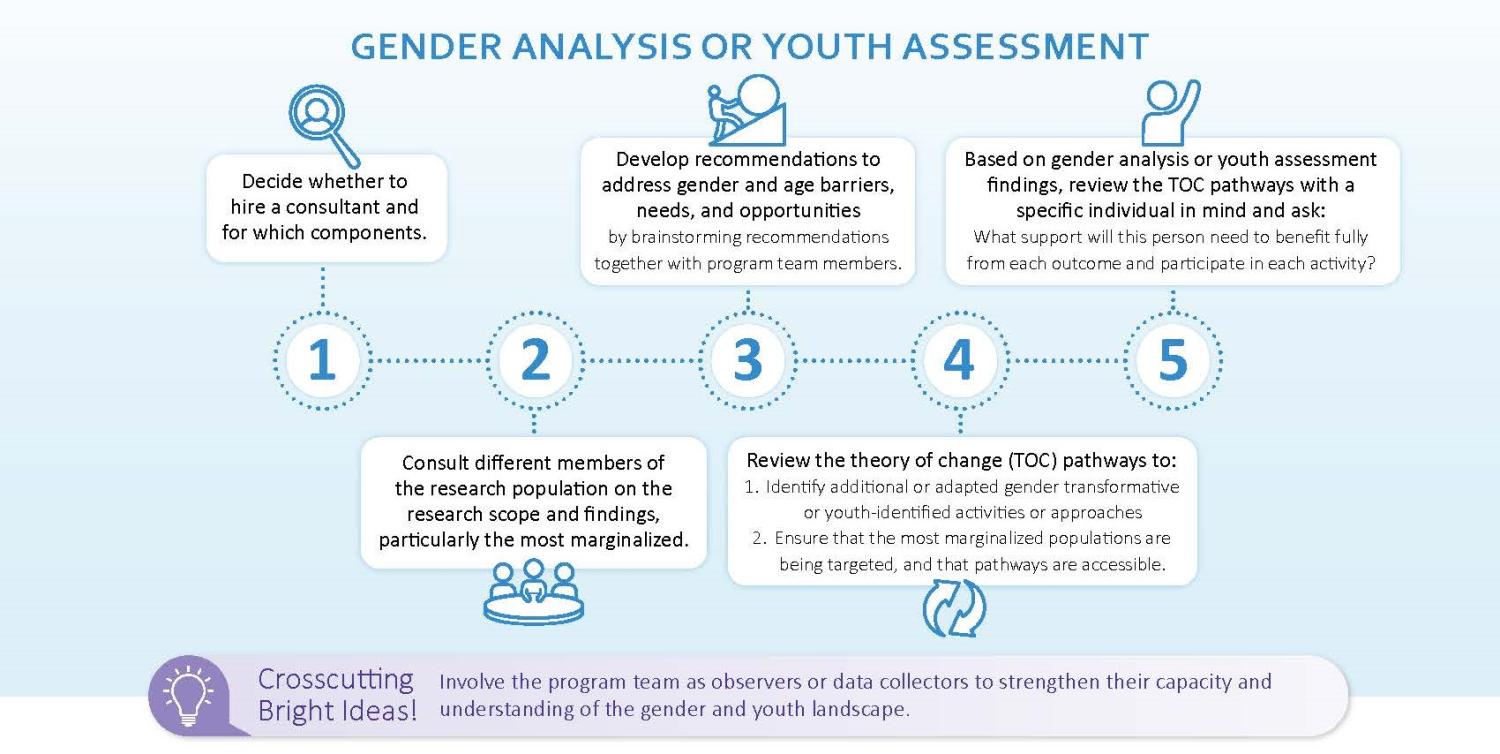Why Your Gender Analysis is Disappointing
By: Emily Janoch, Associate VP of Thought Leadership and Design, CARE, based on an interview with Savannah Smith, Hope Schaitkin, and Michelle LeMeur, GAYA

You've commissioned an analysis to understand the dynamics for different gender, age, and intersectional groups to build a better program, and the results are disappointing. They're too general, too high-level, too obvious. They're accurate, but not useful. What went wrong? Well--you're not alone. MOST of the implementers working with the Gender and Youth Activity (GAYA) have the same experience--gender and social inclusion analyses are often disappointing because we do them wrong.
We do them wrong because most people are thinking about the report as the key deliverable. Instead, we need to focus on building a better program as the key deliverable. Producing a report will never be enough.
What's the solution? Get more focused, involve managers in the whole process, and engage the team in learning, instead of hoping that a consultant can do the learning for you. Hope Schaitkin, Michelle LeMeur, and Savannah Smith from GAYA recorded a podcast talking about why gender analyses usually don’t do what we need them to do—deliver better programming for better impact. Drawing from the experiences shared by a diverse group of implementers during GAYA’s May 2023 Stakeholder Consultation, here are some key reflections they discussed.
What’s the problem?

Michelle: “Either insights into gender and youth needs weren't very helpful or didn't exist, or on the flip side, sometimes, even when a program did have solid insights into the gender and youth needs …they still weren't able to use those to adapt their program activities.”
Why does it matter? What happens if we don’t get the Gender and Youth Analysis right, or we don’t act on its findings?
Hope: “If we don't adequately think through some of the gender youth and social dynamics implications, our program can continue a pattern of discrimination or exclusion of certain groups, either in our participants or of our staff. We could accidentally create or reinforce exclusive or inaccessible activities, and even do harm. By reinforcing harmful stereotypes and behaviors, we could inadvertently put people at risk.”
Why does it happen?
The study is too broad. Michelle: “This sometimes can be because the team set out to answer too many questions, or because there wasn't an adequate desk review to narrow in on what really needs to be studied. But in either case the team might gather information that's interesting and accurate, but not necessarily relevant or specific enough to their own activities.”
The wrong people are leading. Michelle: “Several implementers also shared that hiring outside consultants to lead that gender analysis or youth study process can result in some pretty disappointing reports. Even when the consultants are experts in the local context, they might miss important details because they are not part of the program team and might not fully grasp the team's approaches and objectives.”
Project teams don’t feel accountable. Michelle: “Other program staff who aren't specifically working on gender or youth might not understand or feel responsible for acting on these reports.”
What can we do about it?
Some of the suggestions from implementing partners in GAYA’s Stakeholder Consultation give insights into ways to solve the problem.
Change who creates and owns the recommendations. Hope: “[An] idea [implementers] proposed is asking the consultants to present the data, but not asking them to write the final report or develop recommendations and action items.”

Build ownership from the entire project team. Hope: “[Involve] the whole program team. So not just the gender and youth folks in the initial gender or youth study. This can really help to build ownership across the board…. It’s really important as well, not only to involve them in the definition of those studies, but also as facilitators of the qualitative data collection in making sense of that data and action planning for that data.”
Michelle: “Involving that overall program staff, the non-gender and youth team members, including leadership, was really critical to the process overall. So they [implementing partners] reflected that being in the room and listening to women openly share their stories was important for building that ownership and urgency among the rest of the team.”
Donors give clearer directions. Michelle: “We’ve seen… how powerful it is when the donor messages that they don't, in fact, want a broad overarching study. They have plenty of those, and they really do want the team to narrow in on very specific questions that are contextualized and nuanced to do their program.”
Savannah: “How the donor might help push the needle forward, as well, is to ensure that they're asking program leadership about gender and youth issues during their program visits or during their meetings. [This can] make sure that it's clearly communicated that gender and youth integration is a priority for the program.”
Get way more specific sooner. Hope: “For each study, [ask yourself]
- How much time do you have?
- What are the resources you have available?
- What are the team members you have available?
- And what are you actually going to be able to use from that study in your program?
- What are you going to be able to adapt your program based on to prioritize among those many information gaps which we all have?”
Speak to project leaders and their goals. Michelle: “If you are thinking about how to advocate for [leaders’] involvement, and they are very busy people and have many competing priorities, how can you put the value-add in a language that really speaks to them? …[Highlight how] it will support even something like programmatic reach or improve program outcomes … I think it's really important to really meet people where they're at, and for program leadership, of course they're thinking about program outcomes and impact.”

Want to learn more?
Listen to the whole interview and insights here.
Here are some links to check out about what you should do next.
- Step-by-step: A Roadmap to Gender and Youth Integration in Food Security and Resilience Programs
- GAYA Event Report – May 2023 Stakeholder Consultation
This blog is co-published by the FSN Network.



